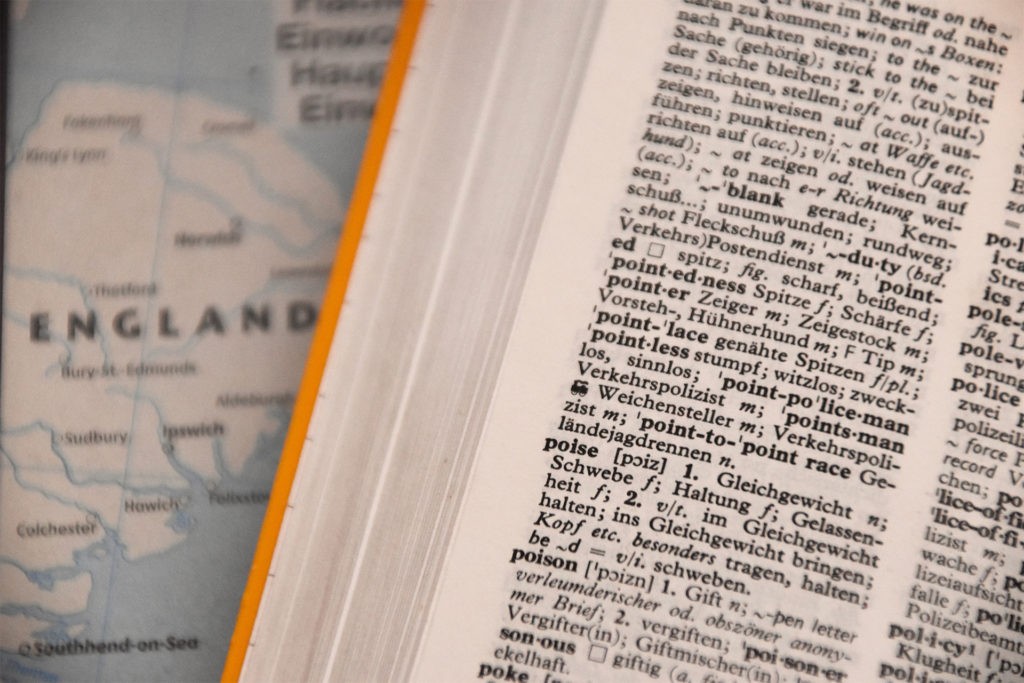What’s the difference between toward and towards?
The confusion surrounding the usage of toward and towards involves three primary editorial preferences: the geography of writing (i.e., British vs. American English), the Associated Press Stylebook, and formal academic writing.
For casual writing purposes, it’s not a big deal to use either toward or towards because they are used the way and have the same definition. Unlike other grammar rules involving words that end with the letter “-s,” using either toward or towards does not change the structure or meaning of a sentence.
Another reason why grammar students are frequently confused is that toward and towards are homophones, meaning they are spelled differently but pronounced nearly the same. Homophones commonly carry different meanings, although toward and towards share the same definition.
It is important to learn why toward is used over towards, and vice versa, because the one grammar tip to rule them all is that no matter how you write and edit, consistency is key. If you decide to use the word toward, keep using it in the same fashion throughout your piece.
North American toward vs. British towards
Using the word toward is more common for English speakers in the United States and Canada, but if you’re in the United Kingdom, audiences generally use towards. The reason for this stems back to Old English as toweard, where it was used as an adjective.
After the Eighteenth Century, English spelling began to change with geography, and Americans and Canadians have since used words like toward a bit differently than their British-English counterparts. In the UK, words such as “backward” and toward are used more like adjectives, while “backwards” and towards are incorporated into sentences as adverbs.
The AP Stylebook on toward vs. towards
Journalists and marketing copywriters often use The Associated Press Stylebook for editing because it suggests using language that is clear, neutral, and allows for concise phrasing to fit within print media. While it is true that not all news media is distributed in print these days, the AP Stylebook is still one of the most trusted editing guides, both ethically and grammatically.
When it comes to using toward or towards, the AP Stylebook advises against using towards. But the AP Stylebook is not the only newsprint style guide to make similar suggestions for word duos ending with “-s” (i.e., backward vs. backwards or afterward vs. afterwards).
In the case of The New York Times Manual of Style and Usage, afterward is used instead of afterwards. The Chicago Manual of Style is less rigid about using toward or towards, although it does distinguish the importance of regional dialects and writing for the appropriate audience.
Toward vs. towards in academic writing
While using towards and toward interchangeably in casual writing is perfectly fine, using the word towards in academic writing is considered to be informal. According to The Academic Writer’s Handbook, towards is only acceptable for British English.
What does toward and towards mean?
The word toward, or towards, is defined as either an adjective or a preposition. The adjectival form of toward is far less common in modern English language because its prime usage occurred in the Old and Middle English languages.
When used as an adjective, toward is used to describe something as occurring soon, imminently, in the moment, or as a way to describe one who is quick to adapt. As a preposition, both toward and towards are used to describe relation, movement, position, and purpose.
We use toward and towards as prepositions to express moving closer to something, to connect ideas and topics, to communicate how near an object is to another, or to describe why a subject is working toward achieving a goal.
The four ways to use toward and towards as prepositions
There are four primary ways to write toward or towards as a preposition, whether you’re using American or British spelling. In case you’re wondering, though, a preposition always occurs before a noun or pronoun in a sentence. We use prepositions to relate one word or subject to another within the same clause.
Consider the following sentence elements where the preposition toward or towards is used along with their related synonyms or phrases:
Movement
Examples: The dog ran toward the frisbee.
We are driving toward the border.
Sarah plans to walk toward Broadway Street.
Synonyms of toward as movement:
In the direction of, to; so as to approach, and so as to near.
Relation
Examples: Older adult’s compassion toward the youth has waned.
My contempt toward the television grows.
If you run toward the street, you’ll hear the ice cream truck.
Synonyms of toward for relation:
With/in regard to, regarding, with/in respect to, in relation to, concerning, about, and in connection with.
Position
Examples: He was found toward the front entrance.
The wine grapes grow up toward the fence.
I am graduating toward the end of Spring.
Synonyms of toward as position:
Just before, shortly before, nearing, around, approaching, close to, coming to, and not quite.
Purpose
Examples: Adam worked toward buying his first car.
The students are working toward a brighter future.
She will work toward her graduate degree.
Synonyms of toward for purpose:
With the aim of, in order to achieve, so as to achieve, for, or as a contribution to, for, to help, to assist; assisting, supporting, and promoting.
FAQ: Related Terms
What is a preposition?
The term “preposition” is thrown around frequently when discussing toward vs. towards, but if we don’t have a firm grasp on what a preposition is, learning about grammar is more complicated. As stated before, a preposition is placed before a noun or pronoun to communicate a relation to another subject within the same clause.
The word preposition, in itself, stems from Late Middle English vocabulary and consists of the translated Latin verb praeponere, which combines “before” and “to place.” Prepositions include any phrase or word containing in, on, at, for, or by.
Additional examples of common prepositions include:
About, after, along, before, between, beyond, inside, except, past, since, throughout, under, unlike, or until.
Test Yourself!
See how well you understand the difference between using toward vs. towards with the following multiple-choice questions.
- Towards is used more commonly by which regional English speakers?
- American English speakers
- British English speakers
- Canadian English speakers
- A and C
- Choose a directional word that is synonymous with toward:
- Except
- Since
- Along
- Until
- Which style guide specifically condemns the use of towards over toward?
- The Chicago Manual of Style
- The New York Times Manual of Style and Usage
- The Associated Press Stylebook
- A and C
- Choose the most correct antonym, or the opposite word, of toward:
- Remove
- Away from
- Against
- On top of
- Using toward is considered improper English grammar in which setting?
- Journalistic writing
- Academic writing in the United States
- The United Kingdom
- A and B
Answers
- B: British English speakers
- C: Along
- C: The Associated Press Stylebook
- B: Away from
- C: The United Kingdom
Sources
- “Easily Confused Words.” Kathleen Jones White Writing Center, Indiana University of Pennsylvania, 2019.
- “Editorial Style Guide for Yale University Publications.” Yale University, n.d.Perlman, M. “Is forwards grammatical, or is it backward?” Columbia Journalism Review, Apr. 24, 2017.
- “Preposition.” Lexico, Oxford University Press, 2019.
- Rosen, L.J. “Toward, towards.” The Academic Writer’s Handbook, Pearson Longman, p. 536, 2016.
- “Toward.” Cambridge Dictionary, Cambridge University Press, 2019.
- “Toward.” Merriam-Webster Dictionary, 2019.
- “Toward.” Merriam-Webster’s Thesaurus, Merriam-Webster Dictionary, 2019.
- “Towards.” Lexico, Oxford University Press, 2019.
The Word Counter is a dynamic online tool used for counting words, characters, sentences, paragraphs, and pages in real time, along with spelling and grammar checking.








